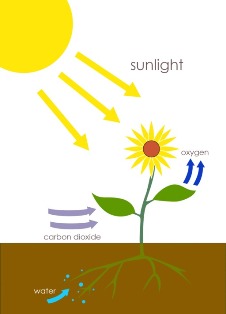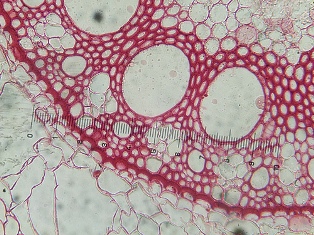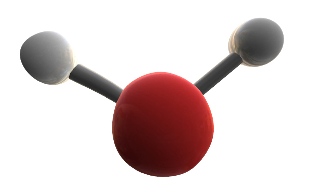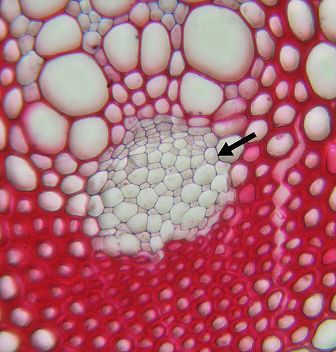
Nutrition
Sage, like any other plant, is autotrophic and produces its own energy via photosynthesis making it a primary producer. In addition, flowering plants have an internal transport system to distribute nutrients. These plants are referred to as vascular plants. Lets explore, in depth, how sage and many other plants begin acquiring nutrients and how those nutrients get distributed.
Heterotrophic Stage
All seed plants begin as heterotrophs! Unbelievable right? Well, seed plants begin in the ground where there is no light present. So to begin growing, the embryo uses the seed's nutrition in order to grow and find light so it can begin to photosynthesize. Contrary to popular belief, plants can actually grow higher in conditions with no light. This is because the plant is constantly trying to find light and given that most seeds start underground the shoots extend upwards to find light. Though, in these conditions, taller isn't always better. In complete darkness the plant isn't producing any energy of its own. This leads to the coloration of the plant being very light green because of the lack of chloroplasts in the cells and the plant usually wilts and dies. Once the stem has found light it will begin to grow upwards and outwards and photosynthesize to produce energy on its own.
Photosynthesis

Photosynthesis is a process that takes place in the leaves of plants. During photosynthesis, light energy is absorbed through a pigment called chlorophyll, which absorbs blue and red wavelengths and reflects green wavelengths. This is what gives plants their green coloration! For the light reactions to work the plant needs an electron to absorb energy and to be elevated to a different energy level. This electron is provided by water which is drawn up through the plants roots through a vascular tissue called xylem. The main product of the light reactions is ATP (adenosine triphosphate) which is used as energy in later steps of photosynthesis. Along with light energy, the plant needs carbon dioxide to complete photosynthesis. Plants gets their carbon dioxide through small openings in the leaves called stomata. This carbon dioxide enters a process called the Calvin cycle where ATP from the light reactions is used to reduce (add electrons) carbon dioxide and produce sugars that the plant can use.

Nutrient Circulation
For photosynthesis to work, plants need a supply of water. Through the years botanists thought water was able to travel upwards into plants because of root pressure. This has been proven wrong. It was found that water is actually pulled upwards to the top of the plant via xylem. Water is able to move up the plant because of the properties that water possesses.
Four properties that allow for water to move upward
1. Water moves from an area of high water potential (low solute concentration) to low water potential (high solute concentration).

2. Water is a polar molecule, which means that the electrons are not evenly distributed throughout the molecule. This creates partial positive and partial negative poles on opposite sides of the molecule, so molecules will tend to stick to one another. This property is commonly known as cohesion.
3. Polar water molecules also have a strong attraction to other polar molecules. This property is known as adhesion. A very prominent polar molecule in plants is cellulose, which makes up the cell walls of cells in the plant.
4. Water is able to be drawn upwards easier in small tubes. This is known as capillarity, which is a combination of adhesion, cohesion, and tube properties that all tie together.
All these properties tie into the processes that take place inside a plant. Water is used for photosynthesis in the plant's leaves and some of the water transpires out into the air through the plants stomata. Both of these processes decrease the water potential and pulls the water from the roots upwards through the xylem to increase the water potential in the leaves. Since water molecules are cohesive, the molecules form a chain and the top molecules that move into the top of the plant then drag the rest of the water molecules with them. This then provides the leaves with water for photosynthesis.

Once photosynthesis occurs and sugar is made, the sugar needs to be transported throughout the plant. This is done by a vascular tissue called phloem. Phloem tissue is made up of sieve tube members (See arrow in the picture) and companion cells (Smaller cells with dots next to the sieve tube members). The sieve tube members are cells, that at maturity, don't have a nucleus and are the channels that allow the sugar to flow throughout the plant. The companion cells contain a nucleus and work with the sieve tube members to help move the sugar throughout the plant. The sugar doesn't just move because of gravity, osmotic pressure from the nearby xylem helps force the sugar to its destinations along with the help of active transport. Since active transport requires energy and the sieve tube members don't have a nucleus, the companion cells are responsible for making the energy needed for active transport.
In many plants sugar flows from the source of the sugar, which is usually the leaves of the plant downwards towards the roots. In addition, in flowering plants sugar might be needed in other possibly higher parts of the plant such as a flower. In this case, active transport is used to push the sugar upwards.
Much of the energy and nutrition in a plant is used for reproduction. To learn more, continue to Reproduction.
To see the other side of the spectrum, check out how the Jelly Ear Mushroom acquires nutrients!
If you want to see other interesting and important animals, check out the Multiple Organisms web page.